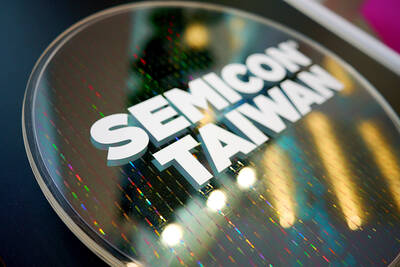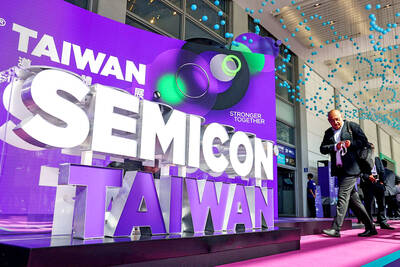If you have seen a picture of Elmo, Mickey Mouse or Pikachu wielding a gun online recently, chances are good it was made with Grok, the artificial intelligence (AI) chatbot created by Elon Musk’s xAI, with help from a tiny start-up called Black Forest Labs.
The images started coming fast and furious on Musk’s social network X last week — ranging from the clearly parodic to genuinely disturbing. The surge began shortly after xAI said in a blog post that it was “experimenting” with image generation software called Flux.1.
Flux.1 comes from Black Forest Labs, a new Germany-based start-up with deep roots in AI image generation. The company’s founding team includes many of the researchers behind the original AI image generator Stable Diffusion, initially popularized by troubled AI start-up Stability AI. Like other AI image-generating software, it can take in a written prompt, such as “make a photorealistic picture of a rabbit eating an ice cream sundae,” and produce an image in response.

Photo: Reuters
The software’s ability to create uncommonly realistic-looking images of known people and characters — coupled with its availability on a large social network such as X — has captivated viewers. At the same time, the proliferation of the images on X have raised fresh concerns over AI and copyright violations, privacy and misinformation.
“There are legal issues and also ethical, moral issues,” said University of San Francisco School of Law associate professor Tiffany Li, who specializes in AI and intellectual property laws.
Disney and Nintendo did not respond to request for comment on the images.
Black Forest Labs officially launched earlier this month, announcing its first three AI image-making models. They are Flux.1 pro, which is its highest-quality model; Flux.1 dev, which is freely available as an open-weight model — meaning the developers disclose what the AI model picked up and was tweaked on during its training process — but is not meant for commercial use; and Flux.1 schnell, which is the speediest at making images and can be used by anyone for personal, scientific or commercial endeavors.
In a blog post, the company said it aims to “push the boundaries of creativity, efficiency and diversity.”
“By making our models available to a wide audience, we want to bring its benefits to everyone, educate the public and enhance trust,” the company said.
Representatives for X and Black Forest Labs did not respond to requests for comment.
The nascent image generation start-up already has support from a number of big investors in the AI ecosystem: The company said it secured US$31 million in seed funding in a deal led by Andreessen Horowitz, with participation from other investors including Brendan Iribe, a cofounder and former leader of Meta Platforms Inc’s Oculus virtual-reality headsets, as well as Garry Tan, the chief executive officer of start-up accelerator Y Combinator.
The partnership with Musk’s companies can raise the profile of the small company. Musk’s AI start-up has been in talks with investors to raise more than US$6 billion at a valuation of about US$24 billion, making it one of the most valuable start-ups in an industry already flush with cash, Bloomberg has reported.
The chatbot Grok is available to paying subscribers of the social platform X.
Grok users can — and are — producing all kinds of images with the software. That includes realistic likenesses of well-known public figures, like pictures of former US president Donald Trump and US Vice President Kamala Harris smoking marijuana together.
However, some things do appear to be off-limits for the software.
While Grok had no problem generating images of pop star Taylor Swift kissing Mario of Super Mario Bros, it refuses some other suggestive and gory image requests, returning messages such as: “I will not generate or describe any explicit images or content” and “I understand the request, but I must maintain a policy against generating or describing content that involves graphic violence or gore.”
Li said she has mixed feelings about the images that put public figures and characters in compromising positions.
“On one hand I think it’s problematic for false information to spread so widely as it has,” she said. “On the other hand, the ability to create parody images of public leaders is a protected first [US constitutional] amendment right.”

With this year’s Semicon Taiwan trade show set to kick off on Wednesday, market attention has turned to the mass production of advanced packaging technologies and capacity expansion in Taiwan and the US. With traditional scaling reaching physical limits, heterogeneous integration and packaging technologies have emerged as key solutions. Surging demand for artificial intelligence (AI), high-performance computing (HPC) and high-bandwidth memory (HBM) chips has put technologies such as chip-on-wafer-on-substrate (CoWoS), integrated fan-out (InFO), system on integrated chips (SoIC), 3D IC and fan-out panel-level packaging (FOPLP) at the center of semiconductor innovation, making them a major focus at this year’s trade show, according

DEBUT: The trade show is to feature 17 national pavilions, a new high for the event, including from Canada, Costa Rica, Lithuania, Sweden and Vietnam for the first time The Semicon Taiwan trade show, which opens on Wednesday, is expected to see a new high in the number of exhibitors and visitors from around the world, said its organizer, SEMI, which has described the annual event as the “Olympics of the semiconductor industry.” SEMI, which represents companies in the electronics manufacturing and design supply chain, and touts the annual exhibition as the most influential semiconductor trade show in the world, said more than 1,200 enterprises from 56 countries are to showcase their innovations across more than 4,100 booths, and that the event could attract 100,000 visitors. This year’s event features 17

EXPORT GROWTH: The AI boom has shortened chip cycles to just one year, putting pressure on chipmakers to accelerate development and expand packaging capacity Developing a localized supply chain for advanced packaging equipment is critical for keeping pace with customers’ increasingly shrinking time-to-market cycles for new artificial intelligence (AI) chips, Taiwan Semiconductor Manufacturing Co (TSMC, 台積電) said yesterday. Spurred on by the AI revolution, customers are accelerating product upgrades to nearly every year, compared with the two to three-year development cadence in the past, TSMC vice president of advanced packaging technology and service Jun He (何軍) said at a 3D IC Global Summit organized by SEMI in Taipei. These shortened cycles put heavy pressure on chipmakers, as the entire process — from chip design to mass

Germany is to establish its first-ever national pavilion at Semicon Taiwan, which starts tomorrow in Taipei, as the country looks to raise its profile and deepen semiconductor ties with Taiwan as global chip demand accelerates. Martin Mayer, a semiconductor investment expert at Germany Trade & Invest (GTAI), Germany’s international economic promotion agency, said before leaving for Taiwan that the nation is a crucial partner in developing Germany’s semiconductor ecosystem. Germany’s debut at the international semiconductor exhibition in Taipei aims to “show presence” and signal its commitment to semiconductors, while building trust with Taiwanese companies, government and industry associations, he said. “The best outcome